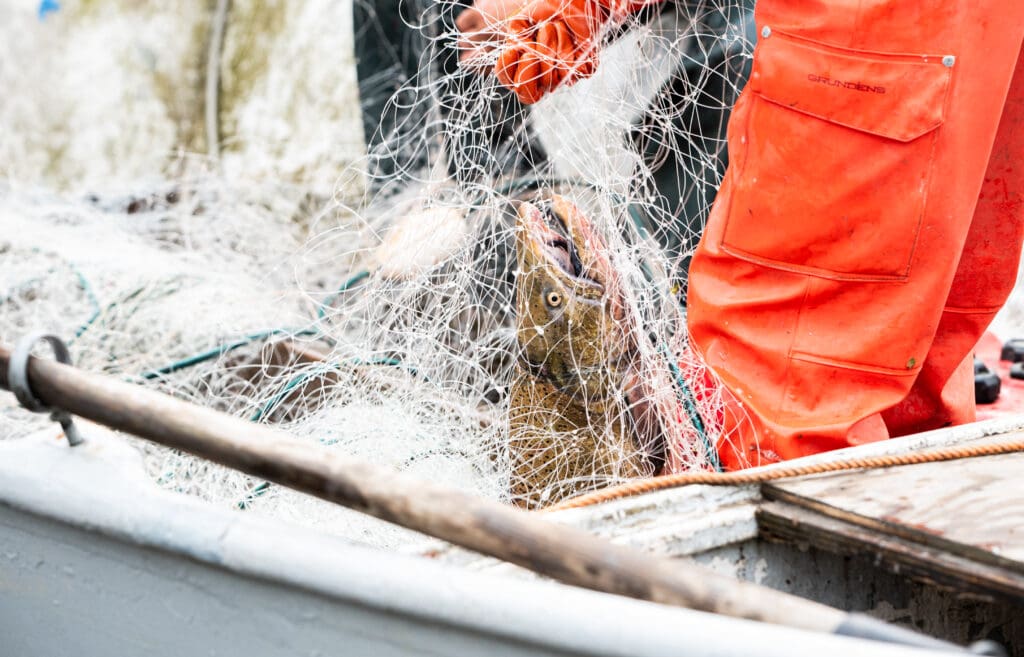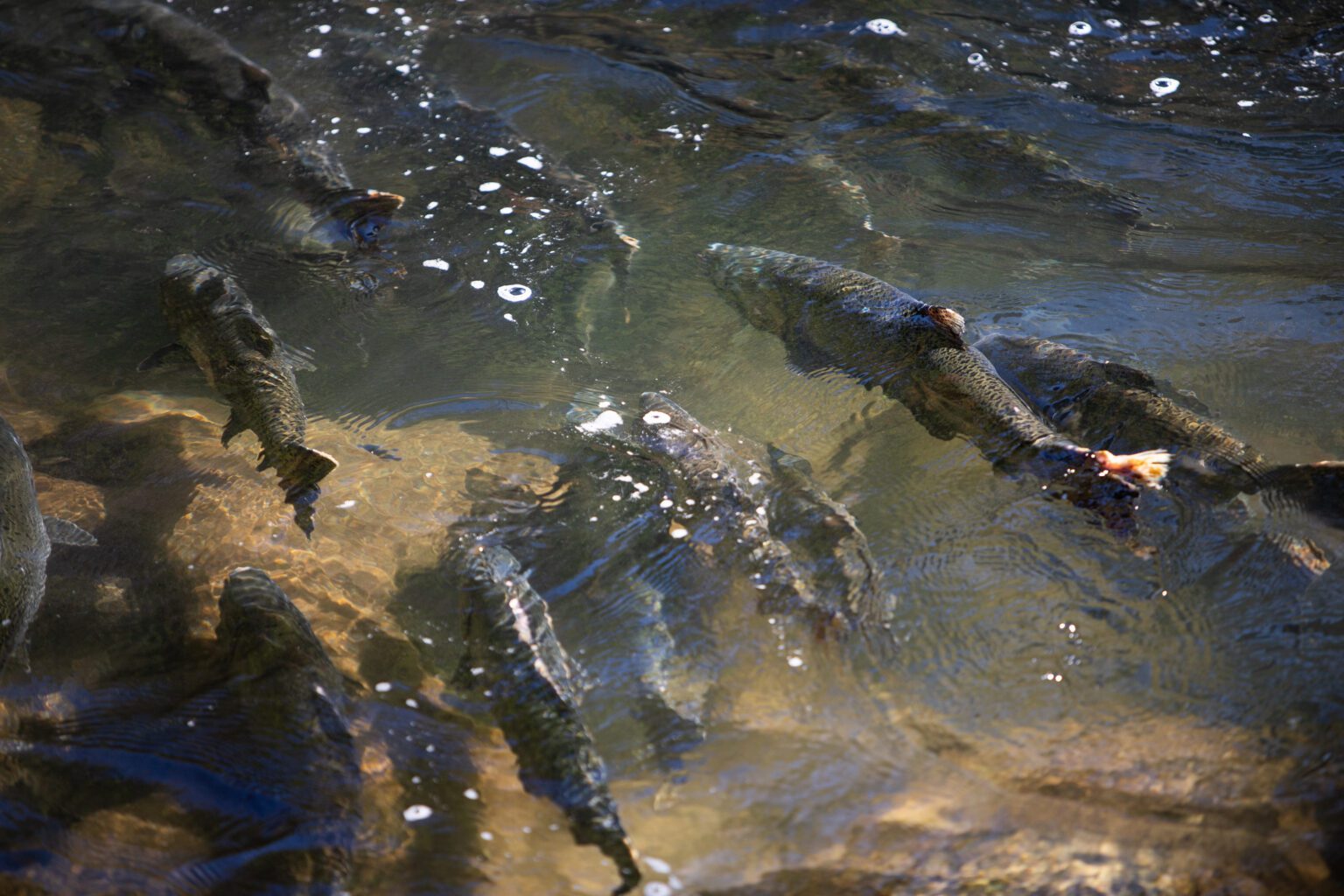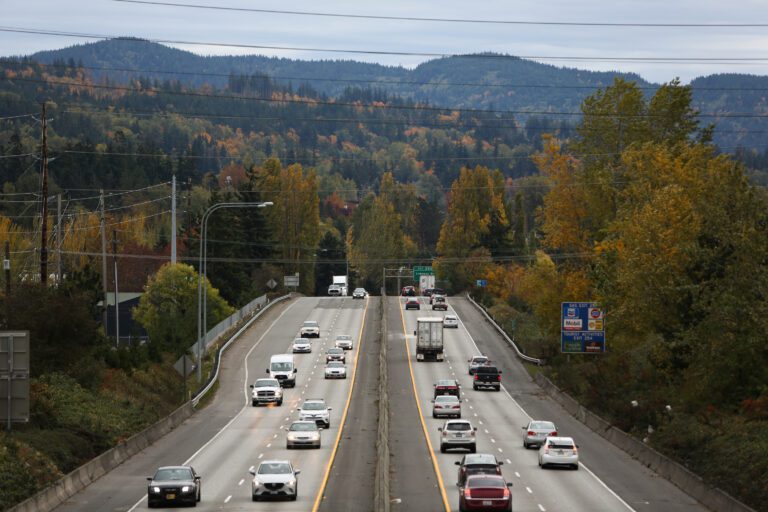Scott Schuyler sat down at his grandmother’s table in Skagit County in 1974 and tasted the delicate, rich flavors of salmon – it was the first time he recalls eating the fish. It was “Indian food.” Food that intrinsically tied him – like so many tribal members in the Pacific Northwest – to his heritage, his culture and his ancestors.
“I just remember how wonderful it tasted and smelled,” said Schuyler, an elder and a member of the Upper Skagit Indian Tribe, who was 10 years old at the time.
It was a formative memory for him because the whole family was buzzing with excitement about the landmark Boldt Decision, which would later be upheld by the U.S. Supreme Court.
The decision, handed down 50 years ago on Feb. 12, 1974, affirmed the rights of Native Americans to fish in their “usual and accustomed places,” allocating them 50% of the annual catch of salmon.
Stemming from the 1855 Treaty of Point Elliott signed more than a century earlier, U.S. District Court Judge George Hugo Boldt’s ruling recognized the tribes’ co-management rights of fishery resources and underscored the federal government’s duty to uphold its treaty obligations.
“It is the gold standard of treaty interpretation,” said Eric Eberhard, associate director of the University of Washington Native American Law Center. “He was very measured and balanced in how he interpreted the treaty.”
The case, United States vs. Washington, was legally complex for a variety of reasons including the tribes’ reliance on oral tradition evidence, which under federal rules can be excluded as hearsay. However, Boldt accepted such testimony, recognizing the cultural traditions of the tribes, while also relying on expert testimony from anthropologist Barbara Lane.
“It gave my family and myself the opportunity to reconnect with our ancestors, our fishing culture, our history, gave us the ability to return to the river named after our people and to gave us the ability to to have Indian food — salmon — again,” said Schuyler, who is a descendant of Pateus, one of the tribal members who signed the 1855 treaty.
Signed by tribal leaders with a U.S. warship floating in the bay, the treaty forced the tribes to surrender millions of acres of land and natural resources and move to reservations. In return, they retained their rights to fish, hunt and gather roots and berries.
At the time the treaty was signed, salmon weren’t particularly important to non-tribal members, explained Lisa Wilson, a council member of the Lummi Indian Business Council and vice chair of the Northwest Indian Fisheries Commission.
But when canneries arrived in the Pacific Northwest — including one of the largest in the world, on Bellingham Bay — it was a “gold rush” with salmon becoming a marketable commodity. Tribal fishermen were pushed out of the industry, marginalized. And, the state initially sided with non-Native residents in how it interpreted the treaty, preventing tribal members from fishing in their traditional ways off reservations.
The Boldt Decision changed that. The ruling reshaped tribes’ access to their cultural heritage and the commercial fishing industry in Washington. It was also pivotal in the long-running Fish Wars.
Family grew up without salmon
Despite being a member of the Upper Skagit Indian Tribe, Schuyler said he grew up in a family without salmon — for the most part — because state and local law enforcement officers had been regularly arresting tribal members for decades, brutally beating and jailing them for “daring to challenge the state” by fishing off reservation.
It was the same situation faced by other treaty tribes throughout Washington.
The Boldt Decision didn’t end the tensions. Instead of state actors targeting tribal members, angry, non-Native residents took to vigilantism, harassment and vandalism. It was not unusual for tribal members to return to their fishing gear only to find it destroyed or missing.

Northwest Indian Fisheries Commission (NWIFC) Chairman Ed Johnstone recalled being one of the first groups of tribal fishermen to begin fishing after the decision — facing the “ugly head of racism.”
“[There were] fights in the streets, shooting at us, tearing up our nets, running into our gear, threatening us,” said Johnstone, of the Quinault Indian Nation.
Johnstone, who grew up fishing the Hoh River on the Olympic Peninsula, said that he lost many close, childhood friends at that time because they felt the decision threatened their livelihood as non-tribal fishermen.
“[Boldt’s] decision that 50 percent of the resources were allocated to the tribes … was not very popular with the non-tribal people,” Wilson said.
A burning cross was erected in the yard of Joseph “Knuckle” Boome, who was the Upper Skagit Indian Tribe chairman at the time of the decision.
“It was not a fun time,” Johnstone said. “We still experienced that but not to the degree that we did in 1974.”
Control of salmon fishing
Salmon fishing is currently controlled by the Puget Sound Salmon Management Plan of 1985, which was developed by Washington and all Puget Sound treaty tribes in accordance with the Boldt Decision. But even at the time of the decision, Washington’s salmon runs were in decline, leading to listing of most Puget Sound wild stocks under the Endangered Species Act, provisions of which continue to drive fishing restrictions today.
A near elimination of nontribal commercial fishing in Washington’s interior waters, coupled with ongoing restrictions on recreational fishing, have continued to fan the flames of racism that raged before and after the Boldt Decision a half-century ago.
In spite of ongoing scientific work to enhance fish runs, tribal fishermen, most of whom visibly net or catch their share of the harvestable catch near stream mouths, are often still accused by other harvesters of indiscriminately killing dwindling numbers of fish.
“We’re the ones that get blamed that it’s our nets across the river is why there are no salmon,” Wilson said. “They just have no clue how we manage right down to the last fish.”
While the situation is “pretty bleak,” Wilson said that at least some people are starting to recognize that if it weren’t for the tribes contribution to managing salmon, there would be none left today.
Fishing pressures are compounded by other natural and human factors making salmon a rapidly dwindling resource. Climate change, variable weather conditions, water quality and habit degradation continue to threaten the viability of salmon resources.
“It’s becoming increasingly difficult to sustain the way of life because of the lack of fish returning,” Schuyler said. “The lack of salmon takes away the ability not only to honor the sacrifice of our ancestors, but it limits our ability to reconnect with our past, history, our way of life.”
Schuyler said he’s lived long enough to have seen the end of a number of fisheries in the Skagit River, including the last chum salmon fishery by the tribe in 2007, the last summer/fall Chinook fishery and the last wild spring Chinook fishery in 1988.
“We want to bring back the fish and not only for their survival, but our survival,” Schuyler said.
Unlike during the Fish Wars, now some of the most significant battles for the tribes as they work to manage their treaty right resources have moved to Washington D.C.
“We have different fights and our ancestors had, it’s a lot more complicated,” said Wilson, who was at the U.S. Capitol last week, meeting with various agencies and advocating for tribal-developed salmon projects.
Wilson and her team were pushing for creating paths for direct funding from the federal government as a way to cut through bureaucratic red tape that she said hampers the tribes’ abilities to save salmon and restore vital habitat.
“Our time is running out with our salmon,” Wilson said, while noting that if it wasn’t for the Boldt Decision upholding treaty rights, the salmon would already be lost.
“We’ve always said, ‘What happens to the salmon happens to our people,’” said Wilson. “So it’s not surprising that our people are suffering because the salmon are suffering.”
Isaac Stone Simonelli is CDN’s enterprise/investigations reporter; reach him at isaacsimonelli@cascadiadaily.com; 360-922-3090 ext. 127.




